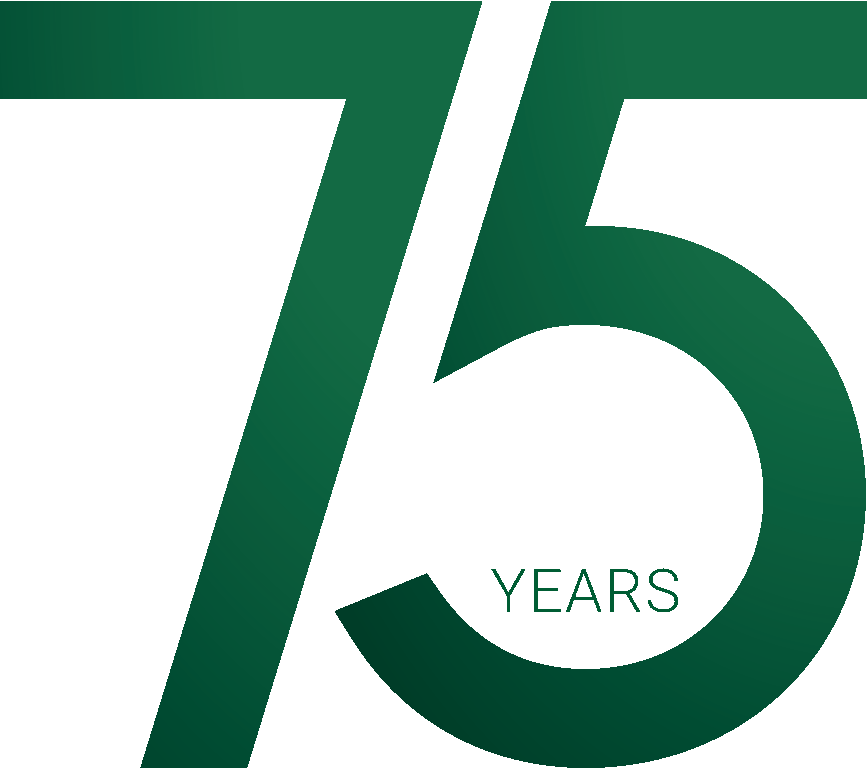
MACHINE DEVELOPMENT
MILESTONES
1967
Journeyman’s piece
At the end of his training as a mechanical engineer, Karl F. Göpfert decided to design a creasing and cutting machine called KS. He presented the drawings to the examination board, who of course did not believe him at first. He was able to convince them and presented his first prototype in 1967.
1973
Short Run Boxmaker
The Short Run Boxmaker was developed from the idea of combining three conventional operations into a single machine enabling rapid changeovers and making it ideal for small production runs of 1 to 400 units. Today, over 450 of these machines are still in use.
1973 – 1975
Flexo Folder Gluer (FFG)
In the mid-1970s, Karl F. Göpfert designed and built his first inline machine - printing from the top and folding downward. It was specifically developed for converting plants operating only one shift and with limited budgets. Remarkably, some of these machines are still in use today.
1979 – 1982
Jumbo-Slotter
In 1979, a large printer slotter with a working width of 4.5 meters was developed for a customer in the USA. Following a request and a personal visit by the owner Richard Pratt of the Australian company ‘Visy Board’, the machine was further developed and in 1982 the FPS 20/55 printer slotter with a working width of 5.5 meters was designed. Since then, the primary customers have been major corrugated packaging groups, with sales managed by BGM. To date, more than 150 of these jumbo machines have been sold worldwide.
1982
RSM
In 1982, Karl F. Göpfert developed a creasing and cutting machine for corrugated board processors, in which all tools could be set automatically. This innovation significantly reduced the setup times compared to conventional machines. Today, 53 of these machines are still in operation worldwide.
1986/1994
RSA and RSA-Ultra
Inspired by the principles of the RSM, Karl F. Göpfert developed a similar machine for corrugator lines in 1986. It featured fully automatic tool adjustment, a razor-blade cutting system, and automatic format changes at a speed of 200 m/min. All 60 units sold are still in operation today. Building on the success of the RSA, the RSA-Ultra was introduced in 1994. It allowed format changes at speeds of up to 350 m/min and could adjust tools in just 1.5 seconds.
1995 – 1997
Direct drive and RDC Evolution
In 1995, Karl F. Göpfert had the groundbreaking idea to replace the traditional gear drive of a rotary die cutter with individual servo drives for each shaft. This innovation set Göpfert apart from its competitors and allowed for significantly higher speeds and improved print accuracy. The concept proved successful: by the end of 1997, the first RDC EVOLUTION was delivered. To date, around 500 units of this machine have been sold worldwide.
2000 – 2003
Ovation
After the RDC Evolution delivered outstanding print results that exceeded the standards of printing presses currently on the market, André Göpfert‘s passion for flexographic printing inspired the development of a dedicated high-graphics printing machine. This led to the creation of the Ovation, a machine that set new benchmarks in the corrugated industry.
2002
Boxmaker SRE maxi 280
Some customers considered “The Boxmaker” too slow, prompting Karl F. Göpfert to design a faster machine by replacing the manual adjustment mechanisms with automatic ones. This led to the development of the SRE 280 Auto.
2005
Double Die Cut Unit
The Australian company Visy Board, which put the world‘s first jumbo slotting machine into operation in 1983, asked for a solution for automatic tool change on a rotary die cutter during ongoing production in 2005. While such automation had long been standard in printing units, it posed a new challenge for rotary die cutters. Karl F. Göpfert and design engineer Hilmar Müller successfully met this challenge by developing a machine that remains both state-of-the-art and one of a kind. The 100th unit was recently sold
2005
Evo-Stack
When it soon became apparent that the bottleneck was a stacker, Karl F. Göpfert tried to find a supplier who could produce an exact number of pieces per bundle at maximum speed. This goal could not be achieved with the established stacker manufacturers, so Karl F. Göpfert developed its own solution. Its designers then produced a prototype in 2005. Today, 343 of these are in use in the industry under the name ‘Evo-Stack’, derived from the name of the RDC Evolution.
2019
G-Cut FDC
For years, customers had been eagerly awaiting a flatbed die cutter to complete the company’s portfolio. Karl F. Göpfert quickly moved away from a process similar to that used by Evolution. Instead, he chose the conventional path, focusing on what works best: a flatbed die cutter that matches the market leader and provides customers with a competitive alternative. Once again, the strategy proved successful. However, Karl F. Göpfert’s vision extends beyond simply offering a FDC; he aims to create an entire environment that ensures a comfortable and attractive workplace for the operator. He continues to pursue this goal to this day.
2022
Super-Jumbo-Slotter 6,5 meters
In 2021, discussions with Tricor began regarding a new generation of jumbo inline machines. The outcome is a groundbreaking line of equipment that exceeds all previous standards: it can now process corrugated board sheets up to 6.5 by 2.5 meters in size and 16 millimeters thick.